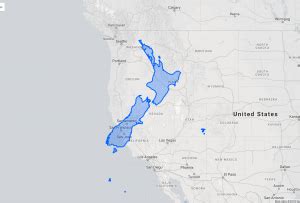New Zealand's Actual Size: Compared to Texas – A Surprising Revelation
New Zealand, the land of the long white cloud, often conjures images of dramatic landscapes, vibrant Maori culture, and adventurous activities. But how big is it really? Many people are surprised when they compare New Zealand's size to that of other well-known states or countries. Let's delve into a detailed comparison between New Zealand and the Lone Star State, Texas, revealing some fascinating insights.
How Big is New Zealand?
New Zealand's total land area encompasses approximately 268,021 square kilometers (103,484 square miles). This includes both the North and South Islands, along with numerous smaller islands. While this might sound substantial, it's crucial to understand the geographical distribution of this landmass. The country is characterized by diverse terrains, from towering mountain ranges and lush rainforests to rolling hills and expansive plains. This diversity contributes to its unique biodiversity and stunning scenery.
How Big is Texas?
Texas, the second-largest state in the United States, boasts a significantly larger land area of roughly 695,662 square kilometers (268,596 square miles). This vast expanse contributes to Texas's diverse ecosystems, ranging from deserts to prairies, and from mountains to coastlines. The sheer scale of Texas often overshadows comparisons with smaller countries like New Zealand.
New Zealand vs. Texas: A Direct Comparison
The most striking difference between New Zealand and Texas lies in their sheer size. Texas is over 2.5 times larger than New Zealand. To visualize this, imagine placing nearly three New Zealands side-by-side to cover the area of Texas. This significant difference in size directly impacts various aspects, including population density, resource management, and infrastructure development.
Why the Discrepancy in Perceived Size?
While the numbers clearly demonstrate Texas's dominance in size, many people initially perceive New Zealand as larger. This perception is likely due to several factors:
- Geographical Representation on Maps: Map projections can distort the relative sizes of countries, particularly those situated across different latitudes.
- Media Portrayal: New Zealand's breathtaking landscapes are extensively featured in media, creating a sense of grandeur and scale that doesn't fully reflect its actual land area.
- Lack of Direct Comparison: Many people haven't directly compared the sizes of New Zealand and Texas, leading to inaccurate estimations.
Frequently Asked Questions
Is New Zealand bigger than any US state?
No, New Zealand is smaller than many US states, including Texas, California, Alaska, Montana, and New Mexico, to name a few.
What US state is closest in size to New Zealand?
While no US state is perfectly comparable in size, Oregon is a somewhat closer comparison, although still larger than New Zealand.
How does New Zealand's population density compare to Texas?
Given its significantly smaller land area and comparable population, New Zealand has a much higher population density than Texas.
What are the implications of the size difference between New Zealand and Texas?
The significant size difference impacts various aspects, including resource management (land usage, water resources), infrastructure development (road networks, transportation systems), and population distribution. Texas's vastness allows for more dispersed settlements, whereas New Zealand's smaller size necessitates a more concentrated population.
Conclusion: Beyond the Numbers
While the quantitative comparison reveals a substantial size difference, this shouldn't overshadow New Zealand's unique geographical features and cultural richness. Its smaller size doesn't diminish its beauty, biodiversity, or global significance. Understanding the actual size comparison helps to appreciate the distinct characteristics and challenges faced by both New Zealand and Texas, two incredibly diverse and fascinating regions of the world.

